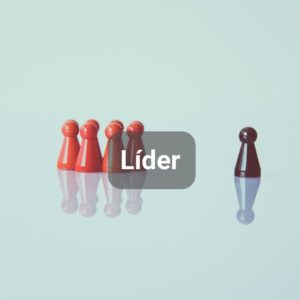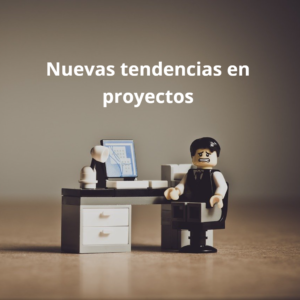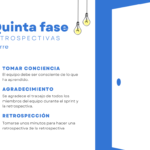Gone are the days where the learning theories of Visual, Auditory and Kinesthetic (VAK) dominated – that some of us learn better when there are lots of visuals to see, or we prefer to hear others talking or lecturing or have to immerse ourselves in an experience to touch or move. Models like these are considered to be too simplistic.
Today there are many updated learning styles based on advances in neuroscience research which coincides with the many different ways we have available to us to learn.
2020 has been the year where there have been pockets of time available to upskill or just pick up that business book that’s been languishing on the bookshelf for too long.
The problem has been that just because you have the time, do you have the headspace and motivation in what has been a rollercoaster of a year with stress and anxiety kicking in?
Regardless of how we learn, learning theories agree that there has to be a variety of different methods of learning and different ways to access it.
In this article we take a look at some of the newer learning styles that have made waves in the learning and development field – and how you can use those insights in your own development in project management. We’ll take a look at RAD, SCARF and AGES.
RAD

No, not Rapid Application Development, it stands for different parts of the brain:
R – Reticular Activating Systems (RAS)
A – Amygdala
D – Dopamine
The theory of RAD is that learning should be stress-free and enjoyable for it to be effective.
R – all information enters the brain through sensory inputs but only so much gets through the RAS. The more unthreatening, engaging and novel the information or learning content is, the better.
A – this is part of our limbic system – you’ll remember from biology classes this is the part of the brain where emotion, motivation and memory are. It’s also a key part of our brain for learning.
D – the neurotransmitter we all love – literally it’s linked to our sense of pleasure and learning is linked to positive associations which tend to be engaging and creative.
For project management professionals, it leads us to an interesting question – if the RAD theory is all about stress-free and enjoyable learning – is an examination based course the right way to go?
As soon as there is an examination or assessment part of our learning method, people always seem to get concerned about passing that. Maybe we should be seeking out learning that allows more engagement and reflection rather than cramming for exams.
SCARF
We love an acronym, here’s what SCARF stands for:
S – Status
C – Certainty
A – Autonomy
R – Relatedness
F – Fairness
With the SCARF theory, learners have increased engagement with that they’re being taught about when a reward is perceived – and less engagement when there is a threat.
The five factors relate to how we engage in the social aspects of learning; interactive and collaboration.
Status – if learning will lead to a change in status; for example, it may lead to a promotion at work – or assist in securing a new role. You are more likely to be motivated to learn. Being given training from the organisation, such as being part of a leadership program would be a prime example.
Certainty – if we can see how this learning will help us, we are more likely to engage in it. When we’re asked to engage in internal training where we can’t see why it applies to us, that’s a classic example of uncertainty.
Autonomy – we need to have some choice and control over what we’re learning and how we’re learning; otherwise, it increases the stress. For some people, eLearning doesn’t work for them because they need to be able to ask instructors questions as they move through the learning.
Relatedness – this is all about trust, empathy and social connection – we want to learn in a place that feels safe, to have a sense of connection with others you’re learning alongside with. We get just as much learning from like-minded peers as we do the materials we’re learning from.
Fairness – if there is any sense of unfairness – whether that’s in the learning content or the way the instructor is, or how the learning environment is set up, it will lead to potential hostility and un engagement.
With the SCARF theory, we’re thinking about how the learning might take place; how much interaction and engagement is there with the instructor and with others. We might opt for a virtual classroom course which promises lots of interactive exercises rather than a potential death-by-Powerpoint eLearning course.

AGES
Josh Davis et al. (2014) and the AGES Model is about how learning gets designed and delivered to make the learning stick. It stands for:
A – Attention
G – Generation
E – Emotion
S – Spacing
Attention – you need to give learning your undivided attention with minimal distractions and to avoid too much learning. Is it this aspect that is stopping a lot of us upskilling right now? There are certainly a lot of distractions. If we’re suffering from a lack of attention, bite-sized learning might be where we choose to spend our learning time. Linkedin learning might be a good place for you to start. Any approach which is novel and varied will help enhance attention.
Generation – we’re more likely to learn and retain that learning if there are personal meaning and significance in what we’re learning about. That’s about taking what you’re learning and making the connections with what you already know or have experienced.
With training that takes place with others, there is that opportunity to recount your experiences and share those. Another option is to ensure you take time to reflect on the learning once you’ve completed it. Even better is to make the connections whilst you’re learning. A good way to do that is through the way you take notes:

Emotion – we’re back to the link with RAD – the emotional response is in the same part of the brain as learning and memory. The more we like something, have a positive experience, the more likely we are to learn and retain. One of the better virtual courses I’ve been on recently was the ability to get to know the others on the course; we had a chance to interact, laugh, commiserate – all of those things that make it feel real.
Spacing – and finally, one of the most important in this virtual age is the spacing – or not cramming everything in. Traditional courses still struggle with this because of the timing issue – a three-day course traditionally would have to be spread out over many more days and is this really realistic? Commercially it wouldn’t make a PRINCE2 course viable, but the use of eLearning does allow you to do that. You’re in control and have 12 months in many cases to do that course before taking the exam.

All of the recent developments in learning theory has been related to neuroscience and specifically neuroplasticity – the ability of the brain to change and reorganise its neural networks. To continue learning – through courses, reading books, attending webinars, listening to podcasts, having a conversation – whatever it might be, we all have the ability to new something new.
Whilst we continue to be in a state of flux and uncertainty, it can be difficult to focus the mind; however, there are so many different methods of learning which lead to different types of engagement, emotion, social connections and ultimately well-being.
The post Learning Styles for Project Managers appeared first on arraspeople.
Fuente: Camel blog (Learning Styles for Project Managers).

































